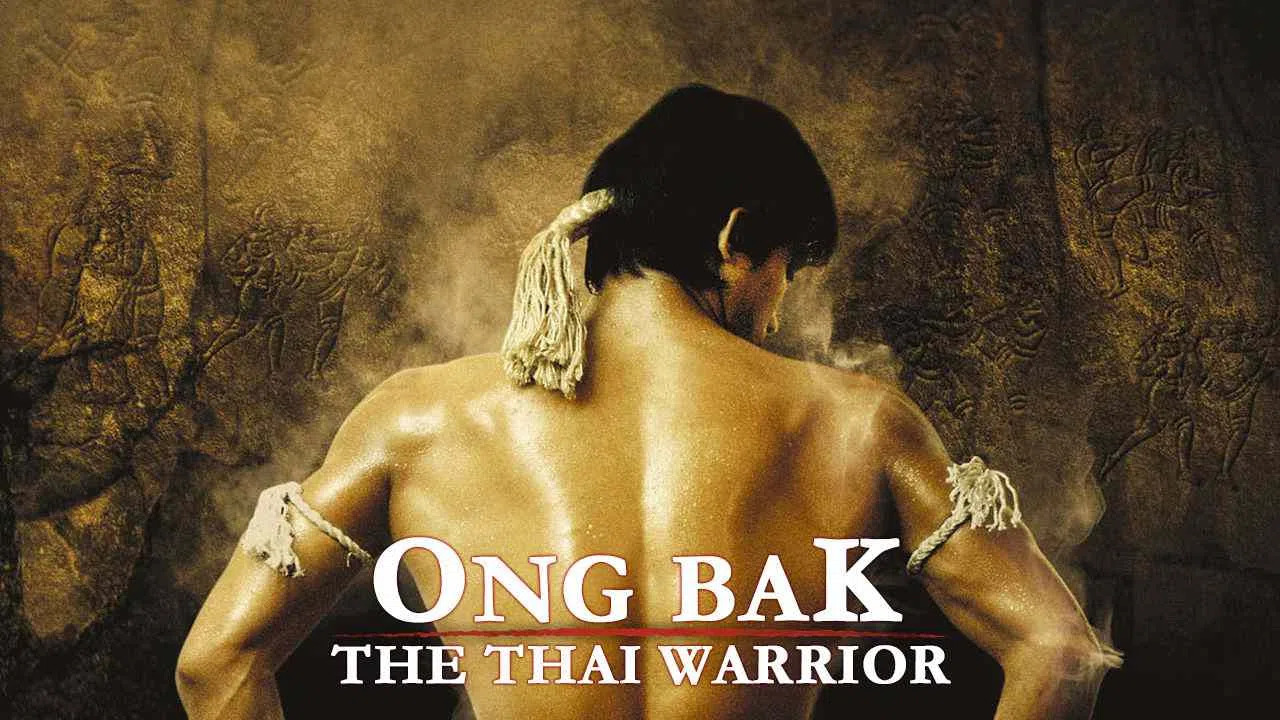
Ong-Bak: The Thai Warrior is a groundbreaking martial arts film that captured the hearts and minds of audiences all around the world. With its mesmerizing action sequences and its unique blend of Thai culture and adrenaline-pumping fights, the movie became an instant classic in the action genre. Released in 2003, Ong-Bak introduced the world to the exceptional talents of Tony Jaa, who not only starred in the film but also served as the action choreographer. This thrilling cinematic experience takes viewers on a journey through the streets of Thailand as they follow the story of a young man named Ting, who must retrieve a stolen Buddha statue from a ruthless gang. In this article, we will delve into 39 fascinating facts about Ong-Bak: The Thai Warrior, from its conception to its impact on the world of martial arts movies.
Key Takeaways:
- Ong-Bak: The Thai Warrior, released in 2003, propelled Tony Jaa to international stardom and showcased authentic Muay Thai techniques, captivating audiences with its high-octane action and stunning martial arts sequences.
- The movie’s success led to a resurgence of interest in Muay Thai, introduced Western audiences to Thai cinema, and remains a beloved classic, blending traditional Thai culture with contemporary filmmaking techniques.
The movie was released in 2003.
Ong-Bak: The Thai Warrior, directed by Prachya Pinkaew, hit theaters in 2003, captivating audiences with its high-octane action and stunning martial arts sequences.
Tony Jaa, a skilled martial artist, played the lead role of Ting.
Tony Jaa’s incredible athleticism and background in Muay Thai made him a perfect fit for the role of Ting, the young warrior determined to retrieve his village’s stolen Buddha statue.
The film showcases authentic Muay Thai techniques.
Ong-Bak: The Thai Warrior stands out for its realistic portrayal of Muay Thai, Thailand’s national martial art. Tony Jaa’s exceptional skills brought the intense fight scenes to life.
The movie became a breakthrough for Tony Jaa’s career.
Ong-Bak propelled Tony Jaa into international stardom, establishing him as one of the most talented and promising martial artists in the film industry.
The fight scenes were choreographed by Panna Rittikrai.
Panna Rittikrai, a renowned martial arts choreographer, worked closely with Tony Jaa to create the breathtaking fight sequences that became a trademark of the film.
The production team faced challenges while filming the stunts.
The filmmakers opted for practical stunts instead of relying on CGI, making the action scenes more authentic. This led to intense training and potential risks for the performers.
Ong-Bak: The Thai Warrior was a box office success.
The movie grossed over million worldwide, surpassing expectations and solidifying its place as one of the most successful Thai films of all time.
The film received critical acclaim.
Ong-Bak: The Thai Warrior was praised for its innovative action sequences, captivating story, and Tony Jaa’s exceptional performance, earning accolades from both critics and audiences alike.
Ong-Bak features a memorable chase scene.
One of the standout moments in the film is an exhilarating chase sequence where Tony Jaa’s character navigates through the busy streets of Bangkok, showcasing his incredible agility.
The use of practical effects adds to the film’s authenticity.
In an era dominated by CGI, Ong-Bak: The Thai Warrior stands out by employing practical effects, enhancing the gritty and realistic atmosphere of the movie.
The movie showcases the beauty of Thai culture.
Besides the thrilling action, Ong-Bak also offers glimpses into Thai traditions, rituals, and landscapes, providing a unique cultural experience for viewers.
Ong-Bak’s success led to two sequels.
The popularity of the original film spawned two sequels, “Ong-Bak 2: The Beginning” and “Ong-Bak 3,” allowing audiences to further explore the story of Tony Jaa’s character.
Tony Jaa performed his own stunts.
Known for his dedication and skill, Tony Jaa insisted on performing all of his stunts, adding an extra layer of authenticity to the action-packed sequences.
The movie was a breakthrough for Thai cinema.
Ong-Bak: The Thai Warrior helped shed light on the talent and potential of Thai filmmakers, opening doors for more international recognition for Thai cinema.
Ong-Bak showcases breathtaking locations in Thailand.
The film takes advantage of Thailand’s stunning landscapes, showcasing various regions of the country, from bustling cities to rural villages.
The film tackles themes of honor and tradition.
Ong-Bak explores themes of traditional values, loyalty, and the preservation of cultural heritage, adding depth to the adrenaline-fueled action.
Tony Jaa’s fighting style in the film draws inspiration from legendary fighters.
For his role, Tony Jaa studied the fighting techniques of renowned martial artists like Bruce Lee and Jackie Chan, incorporating elements of their styles into his own.
Ong-Bak showcases the physical demands of Muay Thai.
The movie highlights the discipline and intensity required in practicing and mastering the art of Muay Thai, giving viewers a glimpse into the world of this traditional martial art.
The film became a cult classic.
Over the years, Ong-Bak: The Thai Warrior has gained a dedicated fanbase worldwide, cementing its status as a beloved cult classic among martial arts enthusiasts.
Ong-Bak introduced Western audiences to Thai cinema.
Prior to its release, Thai films were relatively unknown to Western audiences. Ong-Bak’s international success helped introduce Thai cinema to a broader audience.
The movie’s title translates to “Muay Thai Warrior” in English.
The title “Ong-Bak” refers to the head of a statue in a Thai temple and symbolizes strength and power, tying into the film’s central plot.
Ong-Bak features a powerful soundtrack.
The film’s music, composed by Atomix Clubbing, complements the intense action on screen, heightening the emotional impact of each scene.
Jackie Chan served as an inspiration for Tony Jaa’s career.
Growing up, Tony Jaa idolized Jackie Chan and was heavily influenced by his style of action-comedy, which is reflected in some of the lighter moments in Ong-Bak.
The movie showcases the versatility of Muay Thai.
Ong-Bak demonstrates that Muay Thai is not just a martial art but can be used for self-defense, as well as a means to overcome challenges and protect what is precious.
Ong-Bak’s success paved the way for more Thai action cinema.
The popularity of Ong-Bak opened doors for other Thai action films to gain recognition on the global stage, contributing to the growth of the country’s film industry.
Tony Jaa performed a real-life version of the iconic “Ong-Bak” move at movie premieres.
To amaze audiences and pay tribute to the film, Tony Jaa would perform a high-flying kick resembling the pose of the Ong-Bak statue during promotional events.
Ong-Bak showcases the unique fighting style of Krabi Krabong.
In addition to Muay Thai, the movie introduces viewers to the ancient martial art of Krabi Krabong, known for its intricate weapon techniques and fluid movements.
The film highlights the importance of preserving cultural artifacts.
Ong-Bak revolves around the quest to retrieve a stolen Buddha statue, emphasizing the significance of protecting and preserving cultural heritage.
The movie showcases the physicality and endurance required in Muay Thai training.
Ong-Bak provides insight into the rigorous training routines of Muay Thai fighters, exemplifying the discipline necessary to excel in the sport.
Despite limited dialogue, Tony Jaa’s performance resonates with viewers.
While the movie features minimal dialogue, Tony Jaa’s expressive acting and intense physicality effectively convey the emotions and motivations of his character.
Ong-Bak captures the spirit of Thai martial arts.
The film honors the rich history and tradition of Thai martial arts, showcasing the discipline, respect, and skill required in practicing these ancient combat techniques.
Ong-Bak’s success led to Tony Jaa being hailed as the next martial arts superstar.
Following the film’s release, Tony Jaa was dubbed the next martial arts sensation, drawing comparisons to legendary icons like Bruce Lee and Jackie Chan.
Ong-Bak was a breakthrough for Thai action cinema.
Prior to Ong-Bak, Thai cinema was mostly known for its horror films. The movie opened doors for the Thai film industry to explore different genres and expand its global reach.
The movie’s intense fight scenes were shot in long takes.
To showcase the full extent of Tony Jaa’s skills, the filmmakers opted for long takes in the fight scenes, minimizing editing and allowing the action to unfold seamlessly.
Ong-Bak became a cultural phenomenon in Thailand.
In its home country, Ong-Bak captured the imagination of Thai audiences, becoming a cultural phenomenon and boosting national pride.
The film’s success sparked a renewed interest in Muay Thai.
Ong-Bak’s popularity led to a resurgence of interest in Muay Thai, both as a sport and as a cultural practice, inspiring a new generation of enthusiasts.
Ong-Bak was followed by a prequel and a sequel.
The success of the original film led to the release of “Ong-Bak 2: The Beginning,” which serves as a prequel, and “Ong-Bak 3,” concluding the story of Ting’s journey.
The movie seamlessly blends traditional and modern elements.
Ong-Bak manages to merge traditional Thai culture with contemporary filmmaking techniques, creating a unique cinematic experience that appeals to both local and international audiences.
Ong-Bak: The Thai Warrior remains a beloved classic to this day.
More than 15 years after its release, Ong-Bak continues to captivate audiences with its thrilling action, authentic martial arts, and Tony Jaa’s remarkable performance, solidifying its place as a timeless martial arts masterpiece.
Conclusion
Ong-Bak: The Thai Warrior is a groundbreaking film that revolutionized the action genre. With its breathtaking stunts and thrilling fight scenes, it catapulted Tony Jaa to international stardom. The movie’s success not only introduced audiences to the beauty of Muay Thai, but also showcased the rich cultural heritage of Thailand.
From its iconic one-take fight sequences to Tony Jaa’s incredible athleticism, Ong-Bak: The Thai Warrior is a must-watch for all action movie enthusiasts. With its unique blend of jaw-dropping action, compelling storyline, and authentic martial arts, this film has become a cult classic that continues to captivate audiences worldwide.
FAQs
1. Is Ong-Bak based on a true story?
No, Ong-Bak: The Thai Warrior is a work of fiction and not based on a true story. However, it does incorporate elements of traditional Muay Thai and Thai culture into its narrative.
2. Who is the lead actor in Ong-Bak?
The lead actor in Ong-Bak is Tony Jaa. He not only stars in the film but also served as the action choreographer, showcasing his incredible martial arts skills.
3. What is so special about the action sequences in Ong-Bak?
The action sequences in Ong-Bak are renowned for their raw and authentic depiction of Muay Thai. Tony Jaa performed all his stunts without the use of stunt doubles or CGI, making the fight scenes exhilarating and realistic.
4. How did Ong-Bak impact the action film genre?
Ong-Bak broke new ground in the action film genre by emphasizing practical stunts and showcasing the athleticism of its lead actor, Tony Jaa. The film’s success influenced subsequent action movies and inspired a new wave of martial arts films.
5. Are there any sequels to Ong-Bak?
Yes, there are two sequels to Ong-Bak: Ong-Bak 2: The Beginning (2008) and Ong-Bak 3 (2010). These films continue the story of the main character, played by Tony Jaa, and further explore the world of Muay Thai.
6. Is Ong-Bak available in languages other than Thai?
Yes, Ong-Bak has been dubbed and subtitled in multiple languages to cater to a global audience. It has gained popularity worldwide and has been widely distributed internationally.
Was this page helpful?
Our commitment to delivering trustworthy and engaging content is at the heart of what we do. Each fact on our site is contributed by real users like you, bringing a wealth of diverse insights and information. To ensure the highest standards of accuracy and reliability, our dedicated editors meticulously review each submission. This process guarantees that the facts we share are not only fascinating but also credible. Trust in our commitment to quality and authenticity as you explore and learn with us.


